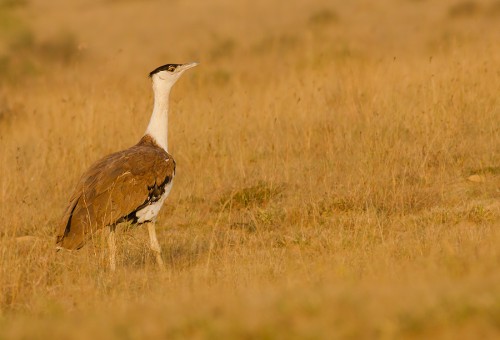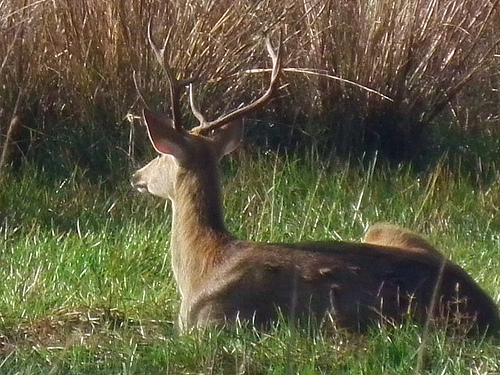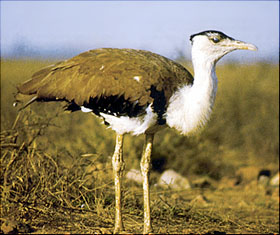There is a new baby in the world and it is very precious as it is a singular addition to a bird family that is struggling hard to survive in the modern world. After a gap of six years, wildlife officials in India’s Desert National Park in Rajasthan, announced the birth of a Critically Endangered (CR) Great Indian Bustard hatchling from a single egg that had been spotted in the grassland park and was being protected against any attack from wild animals or human interference.
There are only 250-300 Great Indian Bustards left in the world. The grassland bird is found in only five states in India today while there was a time when it was spread all over the Indian subcontinent numbering more than 2000.
While habitat destruction was and still is one of the major reasons for the bird’s rapid decline in population across India, another challenge that has led to its ever decreasing numbers is the limited number of eggs that are laid by the bird and that have the chance of hatching.
A single egg
The bustard nesting and breeding time is usually noted to be between March and September during India’s summer monsoons. They do not make any elaborate nests, but usually lay a single or rarely two eggs in a small depression in the soil on any grassland, open ground or rocky areas. The female spend a month incubating the egg. Once the hatchling is born it grows rapidly and may begin to look like an adult in just 30-35 days.
But from laying of an egg to the birth of a chick, there are numerous challenges that may result in the failure of a birth. Great Indian Bustard is a very shy bird vary of humans and in the past one of the major reasons for eggs not hatching is because the parents got scared of human presence and abandoned their eggs. Because of the little protection the eggs get out in the open grounds, they also tend to become meal for feral dogs, mongoose, foxes, vultures and other animals. Last but not the least is the concern of grazing cattle or farm equipments trampling the eggs.
It was therefore a definite reason for cheer for the forest officials in Jaisalmer’s Desert National Park when they found a bustard hatchling in the park.
Protecting future
According to officials, 33 bustards had been spotted in the Ramdeora area of the park recently. In mid-June they found an egg laid in a nest and prepared to protect it from any wild animal attack or accidental human causes.
Devendra Singh Bhati, assistant conservator of forests said that the eggs get stolen from nests by foxes, mongooses, monitor lizards, Egyptian vultures and some other birds. The greatest threats to the eggs come from grazing cows that often trample them.
Bhati further said, “They are capable of year-round breeding but for most of them, the breeding season lasts from March through September, which largely encapsulates the summer monsoon season. They generally make new nests every year. The nests are simple and are often located in depressions made in the soil, in low crop land and grassland or situated on open rocky ground.”
Their next task now is to protect the hatchling from wild animals.
In 1994, GIB was listed as an endangered species on the IUCN ( International Union for Conservation of Nature) Red List of threatened species. By 2011, however, the population decline became severe and the IUCN reclassified the species as ‘critically endangered’.
Rajasthan has the highest number of bustards with around 175 said to be found in the state. Given the critical nature of the species, the state launched its Project Godawan’ last year, named after the local name of the bird.
This single birth is hopefully the precursor of many such births to come in near future.
More Related Stories,
Which is the Heaviest Flying Bird in India?
Great Indian Bustard Spotted in New Habitats






